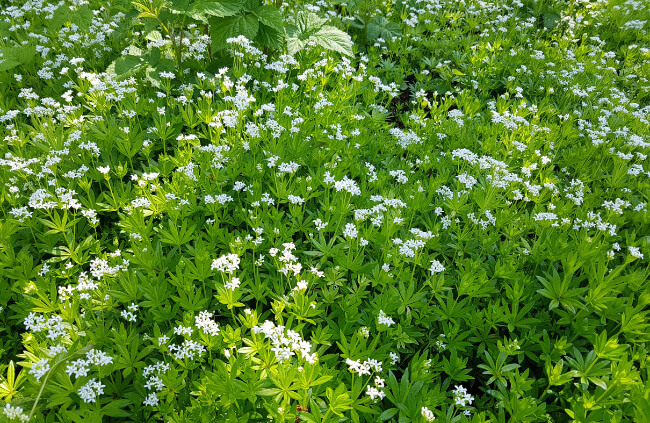Woodruff plants make excellent groundcover plants, and they produce cute white-coloured flowers around or during the springtime. Do not place woodruff in a spot where you don’t want it to completely cover the ground – this plant has a tendency to spread seemingly quickly.
It is better to buy the woodruff plants than the seeds because the seeds take an extraordinarily long amount of time to start growing. Woodruff is nice for use in making wines and teas, and you can find different recipes for those items in gardening books or online.
If you like to dry flowers, you may want to dry some of the woodruff flowers so that you can make use of them in various dried flower arrangements.
More...
How to Grow Woodruff in Australia

Where to Grow Woodruff
Woodruff doesn’t particularly care for a whole lot of sun exposure; this plant much prefers a shadier spot of ground for which to grow on. Of course, some sun exposure is alright for the woodruff plant – just don’t go overboard with exposing it to the sun.
Since woodruff is a perennial plant, it should bloom every single year you have it planted in the ground.
Woodruff Size and Spacing Requirements
Some gardeners believe that an individual woodruff plant only reaches a height of 15 centimetres, while others have found that their woodruff plants get up to around 30 centimetres or a bit more in height.
Much of this plant height discrepancy may be due to the type of soil that the individual woodruff plants are being planted in and how much water they receive on a daily basis. The woodruff plants that are frequently watered, and that are in their preferred soil type, are going to do better than the ones that are always lacking the high-moisture environment that they require.
There is also some debate as to how far apart to space each woodruff plant. Some folks like to space the plants only around 15 centimetres apart; others prefer to space the plants as much as 30 centimetres apart or slightly more.
To be on the safe side, 15 centimetres is the least space you should give each plant. Keep in mind that the woodruff plants spread quite a bit, so any space you do have between each plant will probably eventually go away anyway.

Soil Preferences for Woodruff
Along with moist soil, woodruff plants also seem to do somewhat better when they are surrounded by any types of mulch. The mulch may actually help the woodruff plant retain some of the moisture that it needs to thrive.
The woodruff plants seem to do well without any fertiliser application, but an application of fertiliser likely won’t hurt the woodruff plants.
Watering Requirements
Woodruff plants love to soak up a good quantity of water. Do not forget to water your woodruff plants, or they will probably not do as well as they should. You can actually water your woodruff plants every day, and they will likely do better because of the watering schedule.
Do not allow your woodruff plants to become terribly dry – these particular plants can die off due to lack of hydration. You can plant woodruff plants in dry soil, but be prepared to provide the plants with an increased amount of water.
It is much better to find a very moist soil location for the woodruff plants to be planted in, but not every gardener has a moisture-rich soil location located in his or her garden.
Finally, it’s a good idea not to buy any woodruff plants that look as though they are lacking water. Try to pick woodruff plants that look like they have been well taken care of – which means they were watered as frequently as they should have been.
Published on June 5, 2023 by AGT
Last Updated on October 30, 2023




